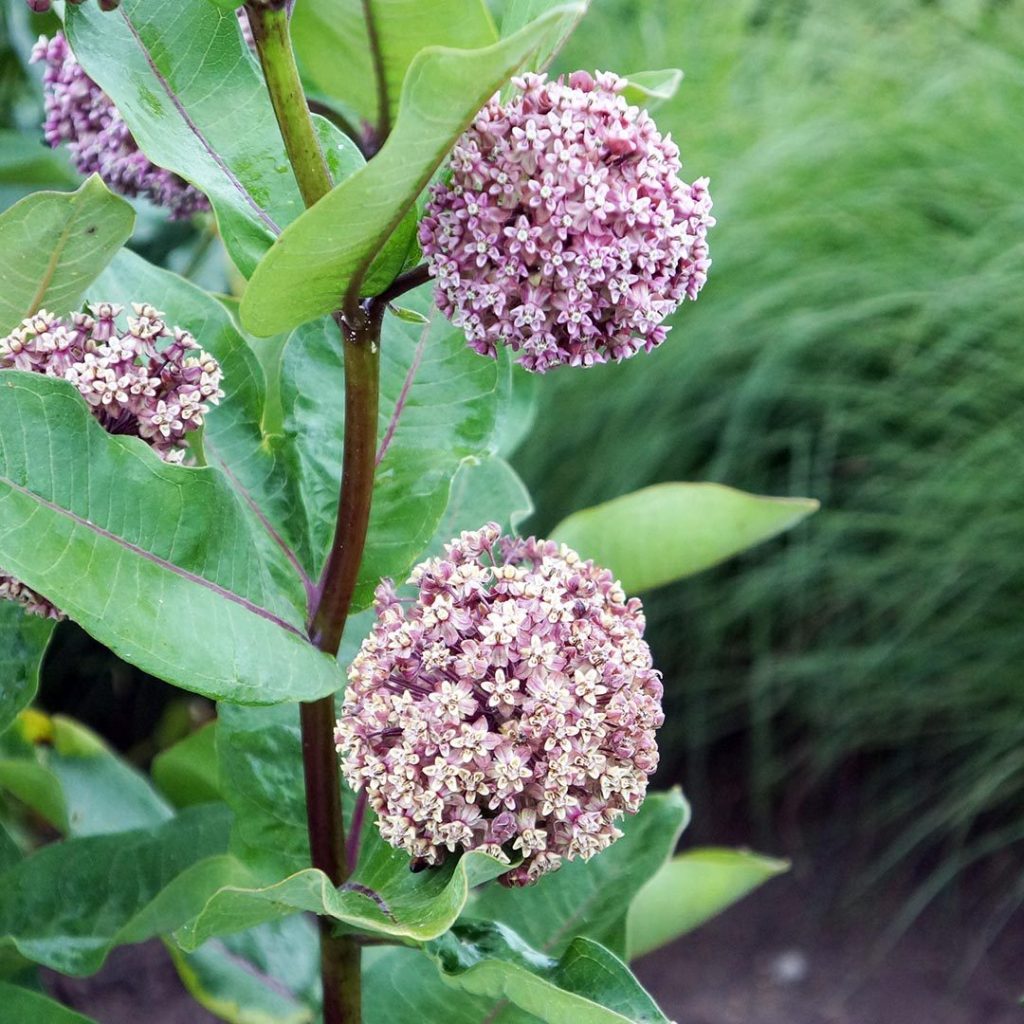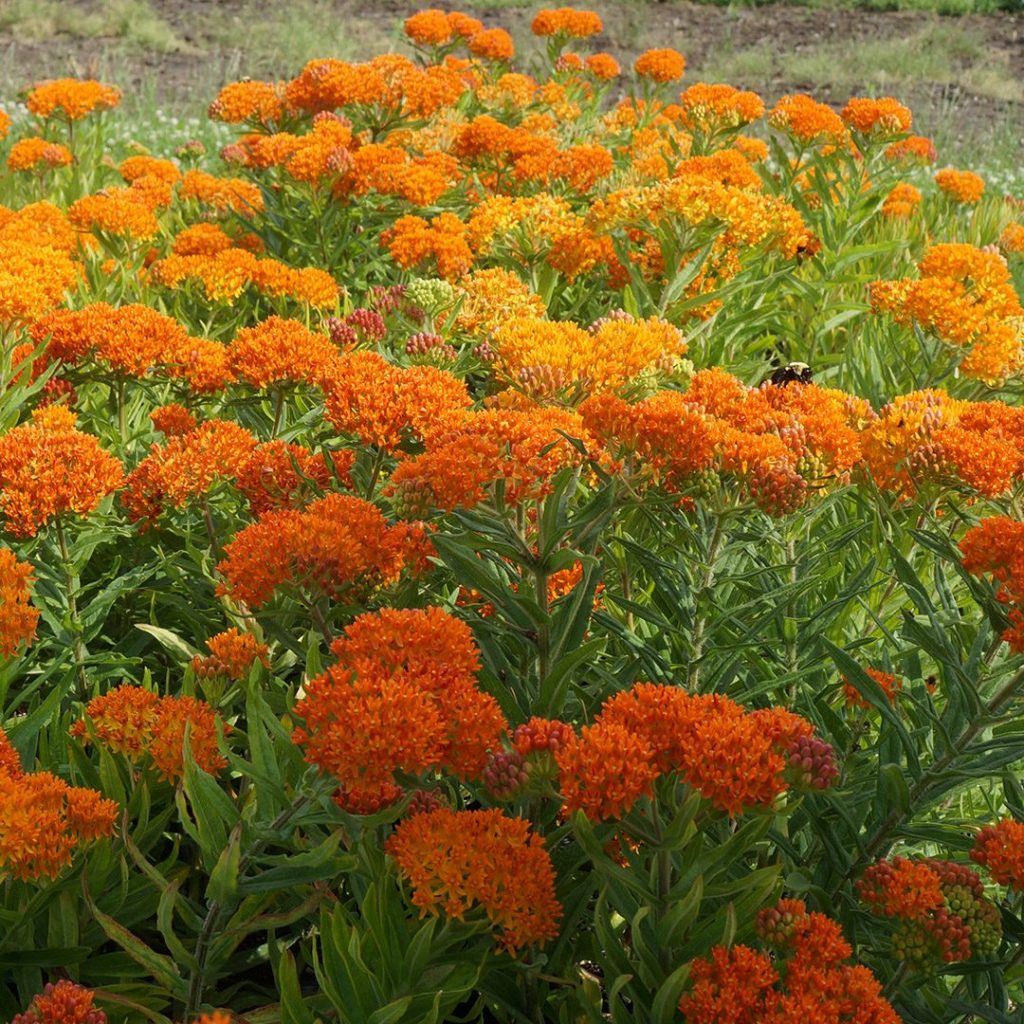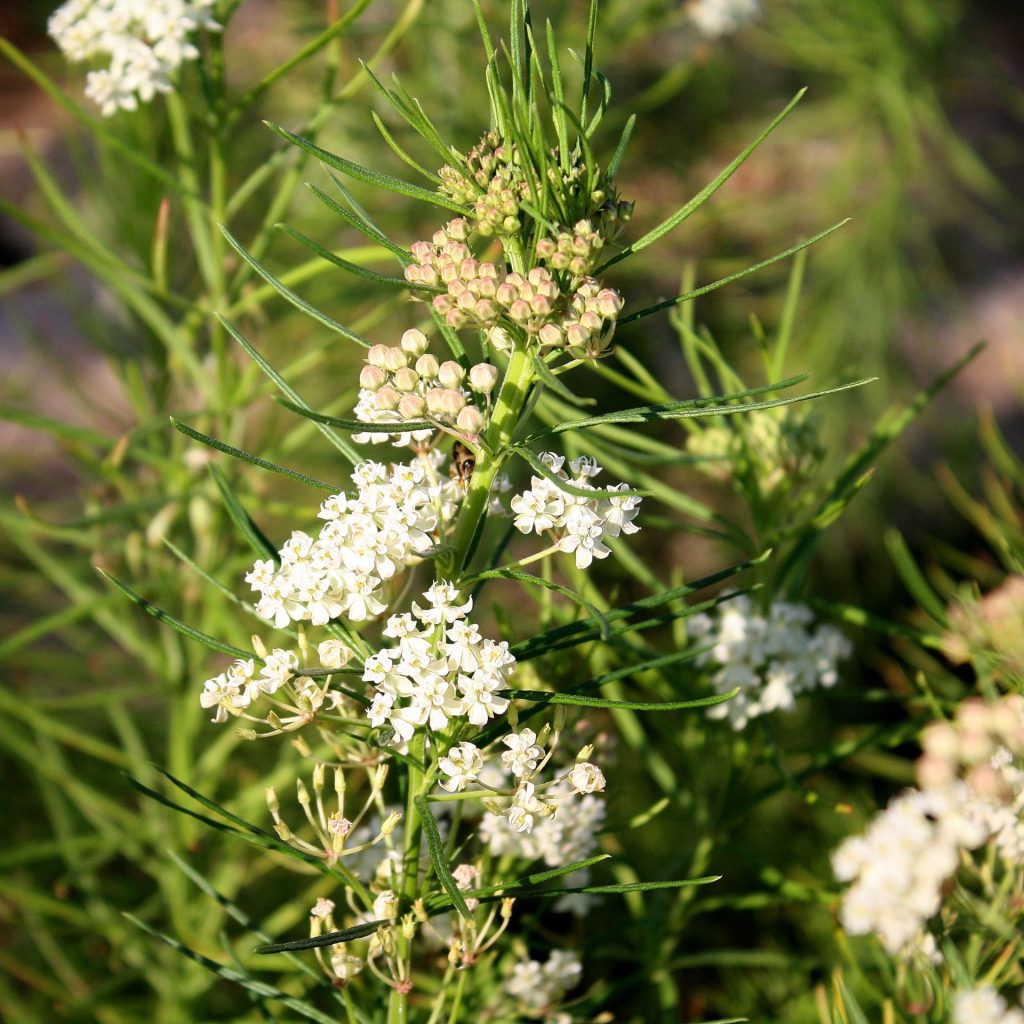Why Is Milkweed So Important?

By Carol Becker
Monarchs and milkweed. They go together like a horse and carriage! Every gardener knows this now because of the recent public media campaign to save the Monarch butterflies from extinction. Thanks to wonderful communication disseminated broadly by many organizations working together, we’ve all learned to include milkweed plants in our gardens, so that Monarch butterfly larvae will have a place to hatch where they can immediately find something to eat.

Did you ever wonder why this one plant is so important to the Monarchs? Or, to state the question another way, “Why can’t those Monarch caterpillars eat some other plant in my garden?” To illustrate the answer, think about your most unfavorite vegetable. I bet that what you will think of next is how bad it tasted to you as a child. If you can remember that, you know the secret of the Monarch butterfly and the milkweed plant. It’s simple: nothing else tastes good to the caterpillar.
If you want to go deeper for the scientific answer, we have to go all the way back to high-school chemistry. (But never fear…you don’t have to remember the Periodic Table!) Just keep thinking about taste, which is determined by chemical composition. In order to survive, plants use chemistry to make themselves taste bad. This is true for all plant material, including the plants we and every other living creature eats. It’s not to their benefit, after all, for plants to be eaten! And when they sense a creature coming their way who might want to take a bite, plants can’t get up and run away. Furthermore, plants can’t mature and reproduce unless they survive. What do they do? They have adapted to this dilemma by manufacturing chemicals that don’t taste good – to caterpillars and other insects.
How do insects respond? Their digestive systems have developed the ability to digest the chemicals that plants use to make themselves taste bad. But adapting to every plant’s defensive chemistry would be very complicated for insects, so in their evolution, insects adapt to the chemicals in only one or two different plant classes (what we call in horticulture a plant Genus). The scientific way of explaining this adaptation is to say that insects have become plant specific.

Monarch caterpillars, once hatched, can only eat the vegetation of Asclepias, the herbaceous, perennial, flowering plant Genus commonly known as milkweeds. Asclepias are named for the latex, a milky substance containing cardiac glycosides (AKA cardenolides) that is exuded when their leaves are broken off or the plant is trimmed or damaged in some other way. Insects like the Monarch caterpillar have adapted to the taste of this particular genus and only this one, so they need it to survive.
The genus Asclepias includes several milkweeds that are fun Monarch caterpillar hosts in the native garden. These include: Butterfly milkweed (Asclepias tuberosa), common milkweed (Asclepias syriaca), swamp milkweed (Asclepias incarnata), and whorled milkweed (Asclepias verticillata).
What about other caterpillars? Asclepias supports a number of them in the garden, in addition to the Monarchs. You can find the whole list at the National Wildlife Federation website plant finder (nwf.org/NativePlantFinder/). But for now, here are a beautiful few to invite to your garden along with the Monarch: the Isabella Tiger Moth, the Striped Garden Caterpillar Moth, the Lined Ruby Tiger Moth, and the Delicate Cycnia. Don’t their names just tempt you to invite them to your garden?

We’re so lucky these days to have the field research to back up our understanding of what it means that insects are plant specific, and to verify a lot more about how insects and plants interact to support the life cycle. Entomologists (the scientists who study insects) have literally spent hundreds of hours in the field watching insect behavior in order to identify which plants support the most insects, what deters an insect from a new variety of a plant that it formerly would eat, and many other things. Using this information, we now can say conclusively why we cannot live without insects! And horticulture specialists can tell us how to work smart in our gardens to support a wide variety of insects with the plants we select.
I’ll be sharing more of this information with you in future blogs, always with tips on how to make the most of it with your own plant choices. For today, remember this: the ecosystem survives on the back of insects, and insects need us to know how to support them in the garden.
Back To Blog
